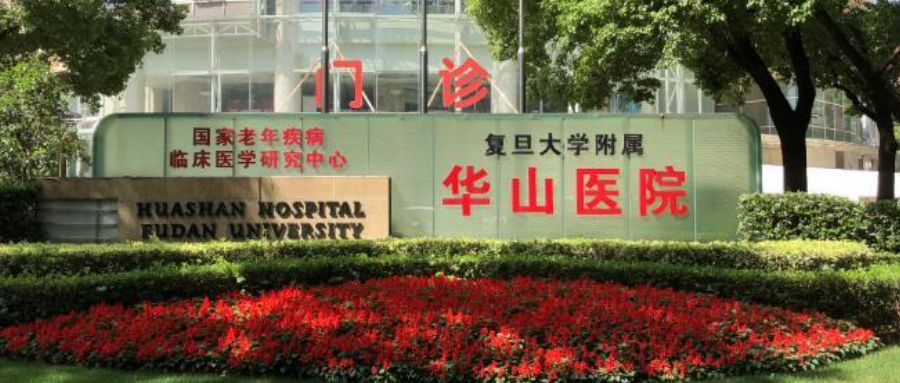

The COP26 organized by UNFCC was held in Glasgow this past November. A hot topic of discussion at the summit was the challenges public health sector faces due to the growing impacts of climate change and how health-care institutions could enhance climate resilience and become actively involved in climate mitigation actions.
With economic advancement, China's medical services gradually increased, but also brought about an increase in carbon emissions. Guided by China's "double carbon" goal, China's health care industry is also actively exploring ways and means to reduce its carbon emissions. As the backbone of healthcare industry, large public hospitals have long been leaders in the field of energy conservation and emission reduction. As one of the country's leading green medical institutions, Shanghai Huashan Hospital's energy-saving and consumption-reduction work has been recognized by peers, being examined as case studies by other hospitals. In our previous article, "Emission Reduction in Hospital Buildings: Energy-saving Renovation and Indoor Air Quality Improvement" we detailed the reasoning behind the project, and this article will focus on the evaluation of the effectiveness of the project after implementation.
Huashan Hospital’s outpatient building added carbon dioxide (CO2) concentration sensors and fresh air intake valve linkage systems to three of the thirteen floors of its Building 1. The renovation connects the CO2 sensor to the fresh air intake valve, when the concentration of CO2 fluctuates around 1000ppm, the fresh air valve would open or close in response in order to ensure that indoor air CO2 concentration is within the safe range. This would also improve the efficiency of the fresh air supply, lowering the need for AC system to constantly adjust indoor temperature, leading to energy conservation and emission reduction.
Simulation results show low cost and high efficiency renovation outcome
The simulation results used the third, forth and fifth floors of the outpatient building as its reference, and the simulation calculation of HVAC system is carried out by using the model based on the basic information of the three-floors of the building. The three floors were simulated as a clinic, the setting of interior design parameters needs to meet the needs of hospital design. The results of simulated energy consumption shows that with the installed CO2 sensor and fresh air linkage control, the heating capacity can be saved by nearly 130,000 kWh/year and the cooling capacity by nearly 150,000 kWh/year. Annual savings of about 14500Nm3 of natural gas and 27,000 kWh of electricity. Using gas unit price of 3 yuan / Nm3 and electricity price of 1.2 yuan / kWh for calculation, the annual savings is approximately 75,800 yuan in operation cost for the hospital. Analysis of energy saving rate shows after the renovation, heating energy saving rate of about 12.4%, cooling energy saving rate of about 15.9%, and annual comprehensive energy saving rate of 14%. If it is assumed that the air-conditioning load of 3, 4 and 5 floors accounts for about 20% of the total load of the building, the annual energy saving rate of the CO2 concentration and fresh air linkage renovation for the outpatient building is about 2.8%.
Short-term real-time data demonstrates effective project results
After the completion of the renovation, real-time data of CO2 monitoring and fresh air linkage system were collected through the Huashan Hospital building automation system (BAS) from October 8th to October 15th, 2021. In the settings of the BAS, the fresh air valve is automatically switched on when the CO2 concentration exceeds 1000 ppm and automatically shuts down when it drops to below 500 ppm. From the collected data set, the fresh air intake system is sensitive to CO2 concentration monitoring, and the on/off switch meets the setting requirements of the BAS. At low CO2 concentrations, the automatic shutdown of fresh air intake reduces the energy consumption requirements of the air conditioning system during low or non-business periods. Based on actual data, the effects of the summer and winter temperature differences are calculated, and the installed monitoring device on the three floors of building 1 can save about 15%-17% of electricity and about 80,000 yuan in electricity costs, which is in line with the simulation results.
Conclusion
The Building Automation System (BAS) installed at the Huashan Hospital played a critical role in the conception and implementation of the project. Large-scale historical and real-time data collection, analysis and sharing can help hospital energy managers get accurate information and make better operating decisions based on the data it provides. From energy audits to final results presentations, the advantages of BAS in data delivery and system scalability (new equipment can be added) are essential, enabling staff to monitor and fine-tune data management, thereby improving operational efficiency.
The project will recover 100% of its investment in about a year, and will begin to save on operating costs for air conditioning systems in outpatient buildings the following year. After seeing the effectiveness of the pilot project, Huashan Hospital decided to make a similar modification to the remaining floors of the outpatient building (a total of 13 floors) by the end of 2021, linking CO2 concentration sensors with its associated fresh air intake systems. The renovation is expected to save Huashan Hospital more than 300,000 yuan a year in energy bills.
This renovation project piloted at Huashan Hospital achieved quick results through a small investment. It not only improved its indoor air quality, but also resulted in significant energy-saving and emission reduction. This project is a valuable case study to other Chinese Grade III class A comprehensive hospitals in energy conservation and emission reduction.
Author:Su Xing, Zhao Ang, Pan Yiren
Translation: Chen Shikai
Proofread: Pan Yiren
This article is an original article of the Rock Environment and Energy Institute. Please contact us to obtain the appropriate authorization to reprint. For cooperation and authorization, please send an email to: liying@reei.org.cn
* This is the translation of an article in Chinese. Should there be any inconsistency between Chinese and English version, the Chinese version shall prevail.




